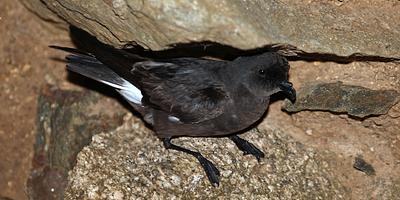
Storm-petrel
Hydrobates pelagicus
What do they look like?
Part of the petrel family, sometimes referred to as the ‘tubenoses’, the European storm petrel is Britain’s smallest breeding seabird. Not much bigger than a sparrow, they have dark brownish black feathers covering their entire body, apart from a white patch just above their tail and a white band on the underside of each wing. Flying low over the water, the tiny storm petrels’ feet skim the waves as it searches for food, sometimes giving the impression that it is running across the surface.
When can I see them in Scotland?
April - October
Where can I see them in Scotland?
Storm Petrels are true seabirds, spending the majority of their time out in open water. They have been known to breed on the west coast and western isles, as well as on Orkney and Shetland. They nest in burrows and rocky crevices, only returning to land at night. They can be spotted from almost anywhere around the Scottish coast during spring and autumn, when they are sometimes blown towards the shore whilst migrating.
Conservation Status:
In the UK, bird species with breeding, passage or wintering populations are assessed by experts and assigned to the Red, Amber or Green lists of conservation concern. European storm-petrels are currently an ‘AMBER’ listed species.
.png)
